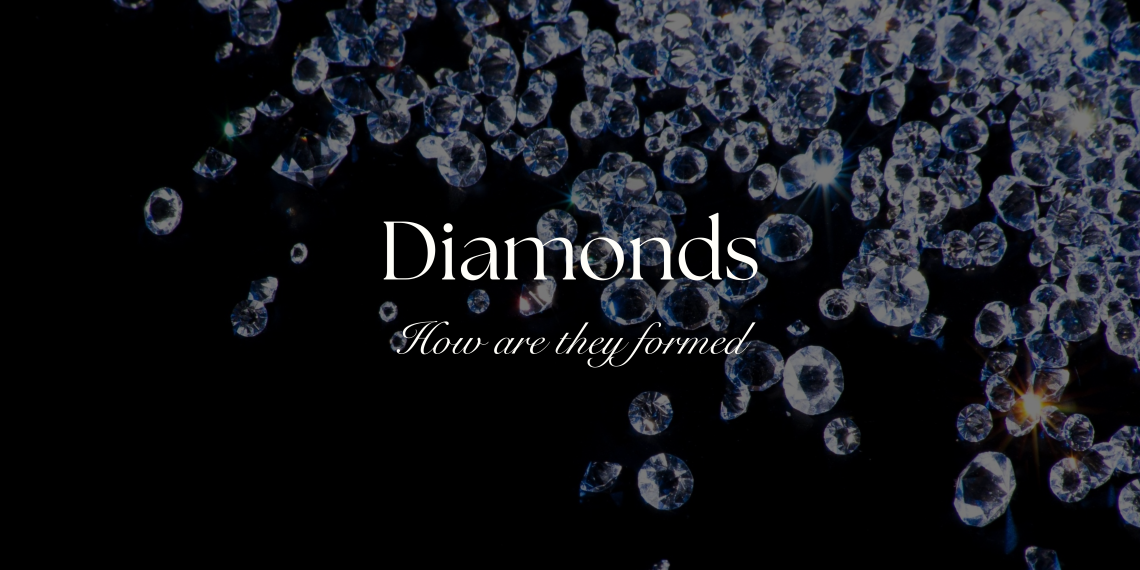Diamonds have long stood as symbols of love, endurance, and timeless beauty. Yet before they ever sparkle in an engagement ring or a pair of earrings, these remarkable stones embark on a journey that begins billions of years ago, deep within the Earth, under conditions of intense heat and pressure. Understanding this journey can deepen your appreciation for these rare gems and the forces that shape them.
What Diamonds Really Are
At their essence, diamonds are made entirely of carbon atoms arranged in a crystal lattice, a structure that makes them the hardest natural substance on Earth. Their brilliance and durability come from this structure, which creates a high refractive index, strong covalent bonds, and transparency across both visible and infrared light.
The Natural Formation of Diamonds
Most natural diamonds begin their formation deep within the Earth’s mantle, around 140 to 190 kilometers below the surface. Here, temperatures range between 900 and 1300 degrees Celsius, and pressures reach 45 to 60 kilobars. Under these extreme conditions, carbon atoms bond and crystallize slowly, a process that takes anywhere from one to three billion years.
To reach the Earth’s surface, diamonds rely on rare volcanic eruptions that carry them upward through kimberlite or lamproite pipes. The speed of this ascent is crucial; if the magma rises too slowly, the diamonds can transform into graphite before reaching the surface.
Other Natural Processes That Create Diamonds
While most diamonds form in the mantle, they can also form in other extraordinary circumstances. In subduction zones, where oceanic plates slide beneath continental plates, the resulting high-pressure conditions can produce diamonds. Large meteorite impacts, such as the one that created the Popigai crater in Russia, can generate the pressure needed to form diamonds almost instantly. Scientists have even discovered tiny diamonds within meteorites, indicating that diamond formation can occur in space during shock events.
Lab-Grown Diamonds: Nature’s Process Recreated
Today, technology allows us to recreate the conditions that form diamonds through two primary methods. The High Pressure, High Temperature (HPHT) method simulates the environment of the mantle, applying pressures of around 5 to 6 gigapascals and temperatures between 1300 and 1600 degrees Celsius to a carbon source and a metal catalyst. Within a few weeks, crystals grow around a diamond seed.
The Chemical Vapor Deposition (CVD) method uses a carbon-rich gas in a plasma chamber, operating at lower pressures and temperatures between 700 and 900 degrees Celsius. Carbon atoms gradually deposit on a diamond seed, growing layer by layer under controlled conditions.
Both methods produce diamonds that are structurally and visually identical to natural diamonds, often with fewer inclusions, allowing consumers to access high-quality diamonds with a known origin.
Why Diamonds Are So Rare
Diamonds require an exact combination of conditions to form and survive the journey to the surface. Only a small percentage of volcanic eruptions are capable of transporting diamonds intact through kimberlite or lamproite pipes. Over millions of years, erosion gradually exposes these pipes, making diamond mining possible in only a few locations worldwide.
What Happens After Diamonds Are Found
Once extracted, rough diamonds are carefully sorted by size, color, and clarity before being cut and polished to reveal their brilliance. They are then graded by organizations such as the Gemological Institute of America (GIA) or the International Gemological Institute (IGI), using the well-known 4Cs: cut, color, clarity, and carat weight.
Insights and Curiosities About Diamond Formation
Some diamonds contain tiny inclusions of ancient minerals that offer scientists valuable clues about the conditions deep within the Earth’s mantle. Many of the world’s oldest diamonds are over 3.5 billion years old, predating many of Earth’s continents. The formation of colored diamonds, including pink, blue, and yellow stones, can result from trace elements or structural anomalies within the crystal lattice during their growth.
Why Understanding Diamond Formation Matters
Learning how diamonds form adds depth to the appreciation of these gems, revealing them as products of extraordinary geological processes rather than mere decorative stones. It also allows buyers to make informed choices when deciding between natural and lab-grown diamonds, understanding that both share the same fundamental qualities, differing only in their origins.
A Journey of Time and Pressure
Every diamond carries a story that began in the depths of the Earth, shaped by heat, pressure, and time, before rising to meet the light. Whether formed naturally or created in a laboratory, each diamond is a testament to the beauty that can emerge from conditions of extreme pressure, reminding us that even under challenging forces, transformation and brilliance can occur.





